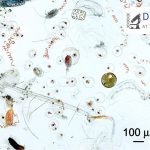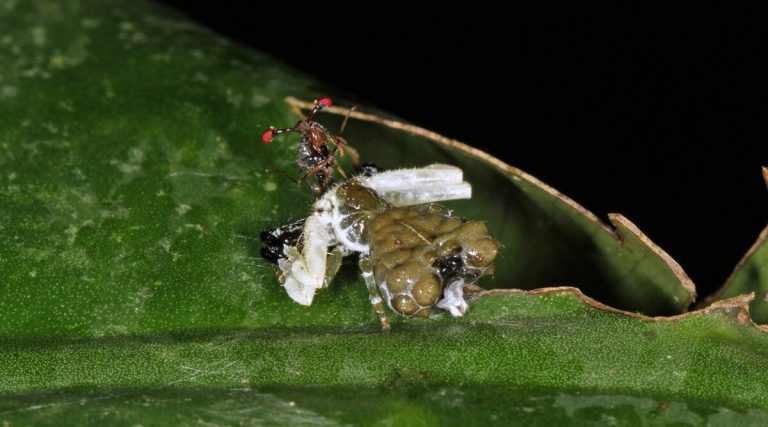You look like bird poop and smell like it, too, almost like a playground taunt.
Such looks and odors are necessary for life in an eat-or-be-eaten environment for the aptly named bird dung crab spiders that live in Southeast Asia’s tropical rainforests.
“All spiders are predators, but they also have predators of their own,” said Daiqin Li, a scientist at Singapore’s National University.
The spiders’ gleaming black-and-white patterning and awful odor are part of a mephitic disguise that fools predators who might otherwise hunt them down — after all, birds avoid consuming what they have already eaten.
However, the mimicry of the bird dung spiders serves another purpose.
According to a study published in Current Zoology this month, the spider’s fecal facade lures food while warding off predators, making it the first disguising species to use aggressive mimicry to intentionally entice in its lunch.
Previous research suggested that the crab spiders’ disguise might lure unsuspecting insects. However, no one had experimental proof until now. Nonetheless, the concept made sense because bird droppings are both enticing sources of nutrients and inviting homes for laying eggs for many insect species. Crab spiders have likewise ambushed predators who prefer to ambush unwitting prey who fall on their leaves.
“They stay there for at least 12 hours,” Li explained. “Sometimes they just stay for the rest of their lives.”
To test the theory, the researchers watched spiders in the wild sitting on leaves and compared the swarms of insects that resulted with those drawn by similar-sized bird droppings. (They had to make sure the droppings were “moist enough,” as dry droppings did not attract many insects, according to Li.)
Spiders and bird droppings were visited by insects at considerably higher rates than empty leaves. Insects, notably flies, were drawn to the spiders, however, the real scat attracted them at a larger rate.
The researchers next used an odorless watercolor paint to modify the spiders’ hues to see if their characteristic color combination was important to tricking specific insects. Insects were less attracted to spiders painted all white or all black than unpainted spiders or spiders painted the same color as they originally were, implying that the deception relied heavily on the appearance of bird droppings. (When the researchers were done viewing the spiders, the paint was readily washed away with a few drops of water.)
The researchers also simulated what the insects would perceive in their visual systems and discovered that the unfortunate prey may be unable to distinguish between a hungry spider and actual bird droppings.
We humans, on the other hand, aren’t likely to do any better.
“Many individuals wouldn’t be able to tell the difference between a spider and a bird dropping,” Stano Pekar, a zoologist at Masaryk University in the Czech Republic, who was not involved in the study but praised its findings. “I mean, they have a fantastic masquerade.”
The results have raised new doubts about the origins of the dung deception. Other crab spider species have varied patterns and amounts of white and black on their bodies, which could affect how effective their disguise is to insects, according to Li. (The more “traditional” crab spider species are green and white, which allows them to blend in with foliage; they also don’t smell like bird droppings and attract fewer flies.)
For predator protection, several animals have evolved to disguise themselves as inedible or inanimate items – early thorn moth larvae resemble twigs, while dead-leaf butterflies resemble, well, dead leaves. Coloration tricks can serve numerous roles in the same species, although researchers rarely look at it. That, according to Pekar, could alter.
“I believe we will see many more situations in the future,” he said, “where both the color and the pattern will be both defensive and offensive.”
Follow Crispbot on Facebook and Twitter. For the latest news, tech news, breaking news headlines, and live updates checkout crispbot.com













